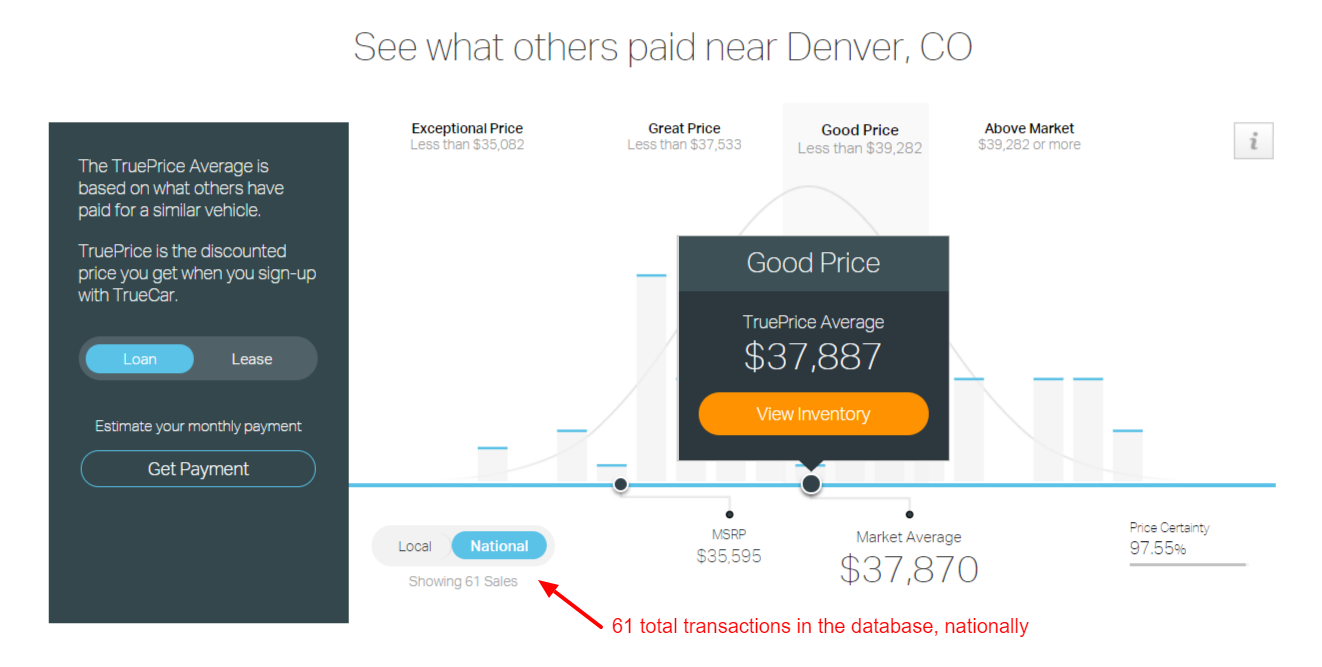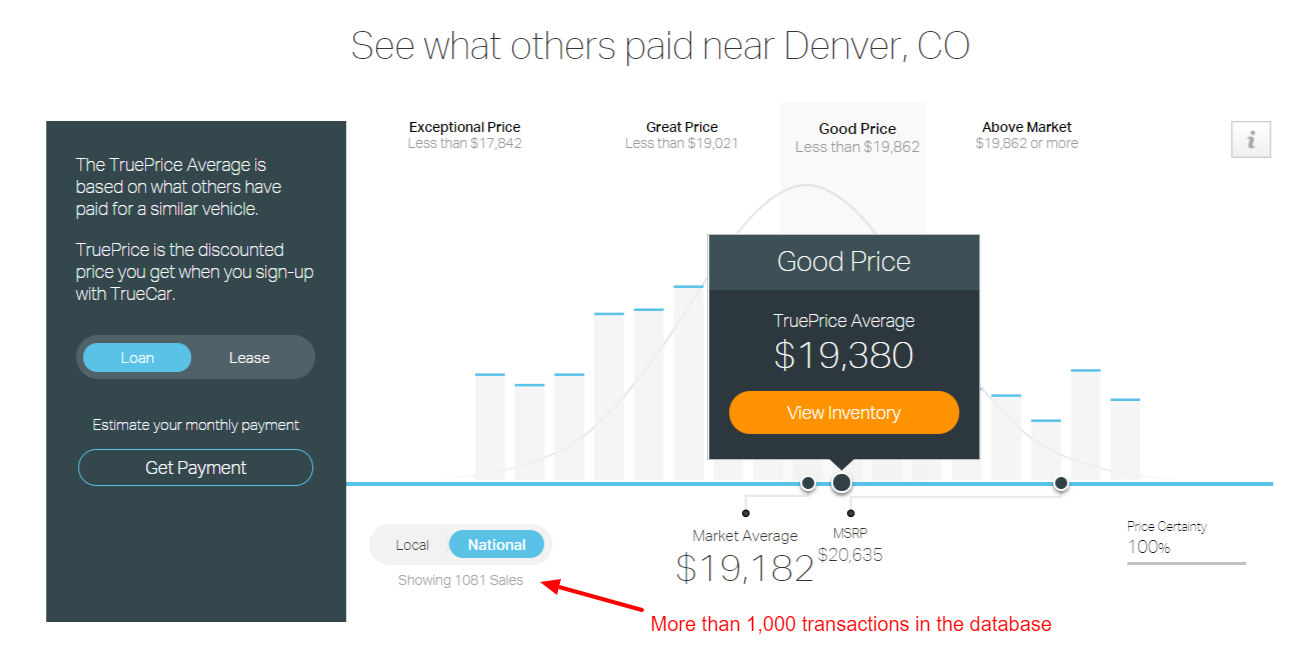A question from a reader:
Q. I read your article about how much a new car should cost, and I checked pricing on TrueCar and the True Market Value pricing on Edmunds.com. Are these prices really accurate? How do I know that these prices aren’t inflated? If most people are bad at negotiating, these prices are too high, right?
Short answer: Both Edmunds and TrueCar have generally accurate information about car pricing. Still, it’s a good idea to evaluate the prices they provide and do your own comparison shopping.
TrueCar and Edmunds True Market Value Pricing – Where The Data Comes From
Both TrueCar and Edmunds.com provide pricing data to the general public on their websites. According to both companies, the pricing information they provide is based on transaction data. But where does this transaction data come from?
According to TrueCar, the data is collected via ‘aggregators’ – from their FAQ page:
TrueCar obtains and processes data from well-known data aggregators within the automotive space to ensure that we present the most accurate pricing information available.
Edmunds.com has a press release about TMV that explains the data comes from ‘private parties’ that seem to include dealerships.
In my opinion, these statements are corporate speak for “we grab data from dealerships that do business with us and use that to determine price estimates.”
To be clear, this is not a bad way to get data. Most of the information about vehicle pricing comes from dealership transaction data. However, because of the way the data is sourced, it’s important to think about sample size.
Sample Size – More Transaction Data Leads To More Accuracy
In statistics, a larger sample size leads to a more certain result. If we’re wondering how often a coin flip will come up heads, we can flip the coin twice (2 samples), or we can flip it 100 times (100 samples). Sampling 100 coin flips will probably show a 50-50 chance of coming up heads. But sampling 2 coin flips? That could give us some bogus data.
To bring this back to cars, consider the 2018 Honda Civic Type R. This is a relatively rare car – Honda will only make a few thousand of them this year. If we check the price for a new Type R Civic on TrueCar, here’s what we see (as of August 2018):

I’d like to draw your attention to the lower part of the screenshot above, where the red arrow points to the number of transactions in the national database for this particular vehicle.
Now, let’s take a look at the pricing data for a Civic LX sedan and see how many samples TrueCar has:

Quite a difference, eh? More than 1,000 samples, according to the screenshot.
To be clear, I am NOT saying that TrueCar data isn’t useful. As a matter of fact, I’m a big fan of TrueCar and don’t hesitate to recommend them (as well as Edmunds). And even with just 61 transactions in the data sample, I’d say the Civic Type R price estimate is very reasonable. But that price estimate is definitely not as trustworthy as the 1,000+ samples they have for Civic LX sedan pricing.
So Is TrueCar and/or Edmunds True Market Value Data Accurate?
Is TrueCar and/or Edmunds True Market Value data accurate? Yes, but it’s no substitute for due diligence. If you’re thinking about buying a new car, you definitely want to check and see what TrueCar and Edmunds True Market Value say. You also definitely want to contact your local dealers and request purchase quotes.
You also want to lookup dealer invoice for the vehicle you want to buy, and base your purchase offer on all of the information you gather.
Is TrueCar or Edmunds TMV Pricing Inflated Because Most People Are Bad Negotiators?
One of the more interesting questions I’ve been asked recently was something along the lines of “Am I sucker to pay TrueCar when I know most people pay too much for a new car?” The answer is no, and here’s why: Car dealers reference TrueCar and Edmunds TMV data too.
Imagine you’re a sales manager at a dealership, and a customer offers you $36,500 for a new Civic Type R. According to the data referenced above, the average consumer is paying almost $1400 more than this customer is offering. As a sales manager, you probably say no to that offer, right?
The more data that TrueCar and Edmunds TMV accumulate, the more accurate it becomes. It’s sort of a circular relationship, in fact.
Summing Up
As I’ve said, I’m a fan of both TrueCar and Edmunds TMV. They’re excellent tools, particularly because they’re free. However, there are some things to keep in mind when using these tools:
- If you’re looking at a rare or limited availability vehicle, the data is less likely to be accurate
- Pricing data is ‘backward looking,’ meaning it doesn’t reflect new rebates, dealer cash, etc.
- Your local new car dealers are a great resource for figuring out the best price. Ask five or ten of them for a price quote, and odds are you’ll get a good price from one of them.
When I personally shop for cars – or help a friend buy a car – I start by checking TrueCar and Edmunds TMV. But I don’t stop there, and neither should you.




